Spring is here and it’s time to get back to your static caravan or holiday lodge and enjoy everything the new season has to offer. Here we bring you our top tips on carrying out those essential Spring checks, to make sure you spot any winter damage and get your caravan ready for the season ahead.
-
Have a toolkit
It’s worthwhile keeping a toolkit at your caravan so you make any quick fixes when problems arise. This could include a set of screwdrivers, pliers, tape measure, extension lead, step ladders, WD40, brushes, hammer and hacksaw. Plus, a stash of cleaning products for when you come to open up.
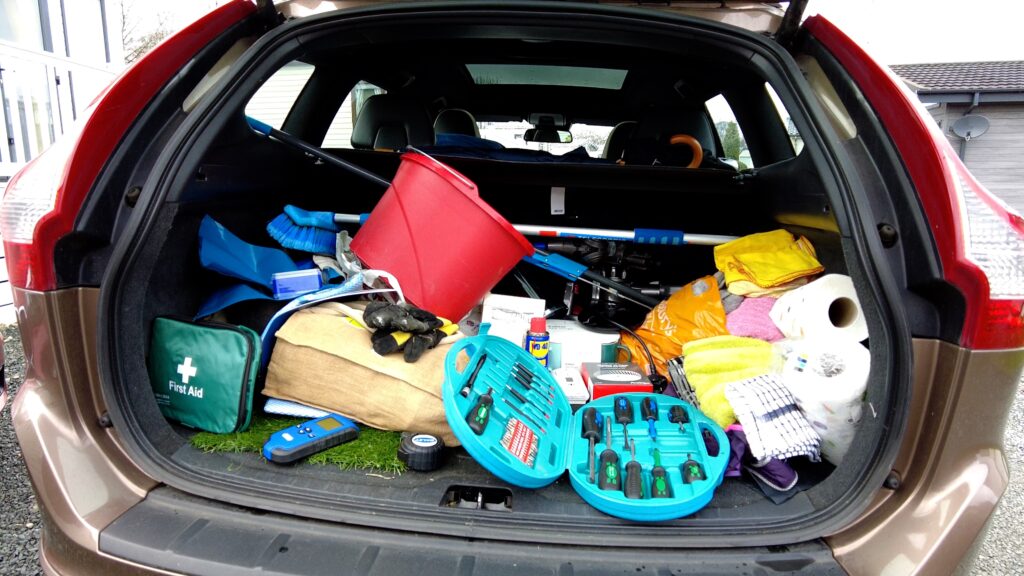
2. Pack the essentials
When returning to your static caravan or lodge you’ll want to make sure you’ve packed everything you need for the new season ahead. First of all don’t forget your caravan keys (yep we’ve done that before!), any passes or codes for the entry gates, batteries for smoke and carbon monoxide detectors, toilet and kitchen roll, towels, bedding, and food, particularly the non-perishable type.
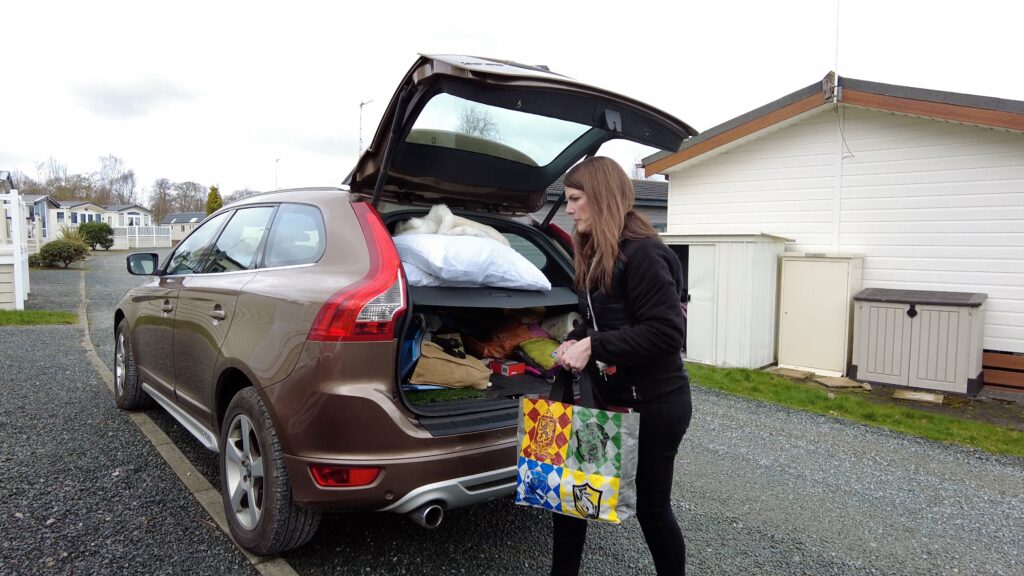
Then any electrical equipment you might have removed, such as the TV, kettle and vacuum cleaner.
3. Exterior checks
Once you’ve unpacked the essentials, check the outside of your caravan for any signs of damage from bad weather, such as strong winds or heavy rainfall.
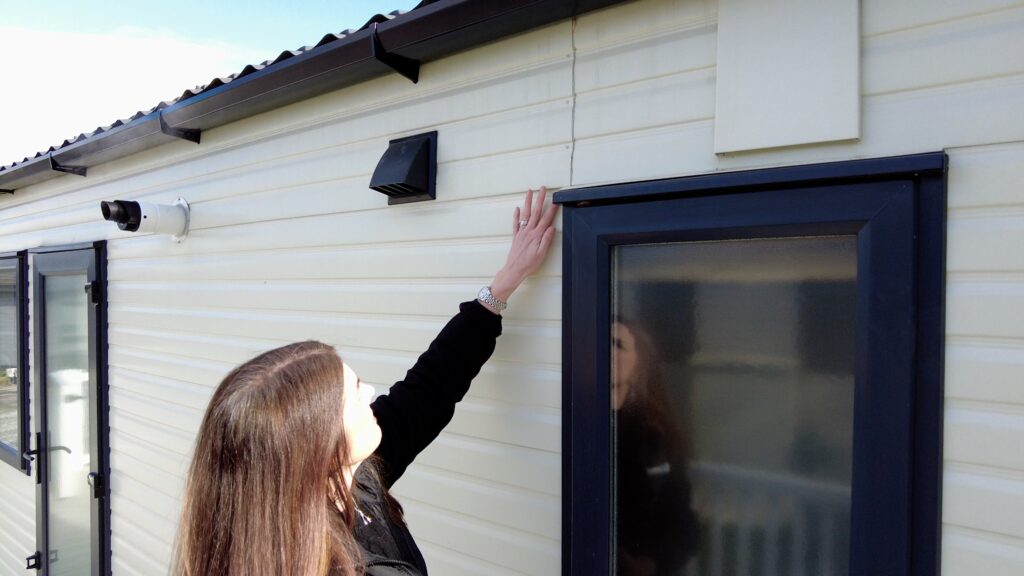
Pay particular attention to your static caravan’s windows, skylights, seams and seals, guttering, roof tiles, and aerials/satellite dishes, plus any decking or outside sheds. Make sure seams, seals and window and door frames are still in a good condition and that they’re still watertight.
Check any vents and flues to make sure they’re not blocked or have not had any animals nesting in them during the winter months. The same goes for the underside of the caravan.
4. Check for storm or weather damage
Have a good look around the panels of your caravan to make sure they haven’t suffered any damage, checking for dents, holes or cracks.
Make a note of any repairs that might need to be carried out and if you’re going to need to contact your insurance company to make a claim.
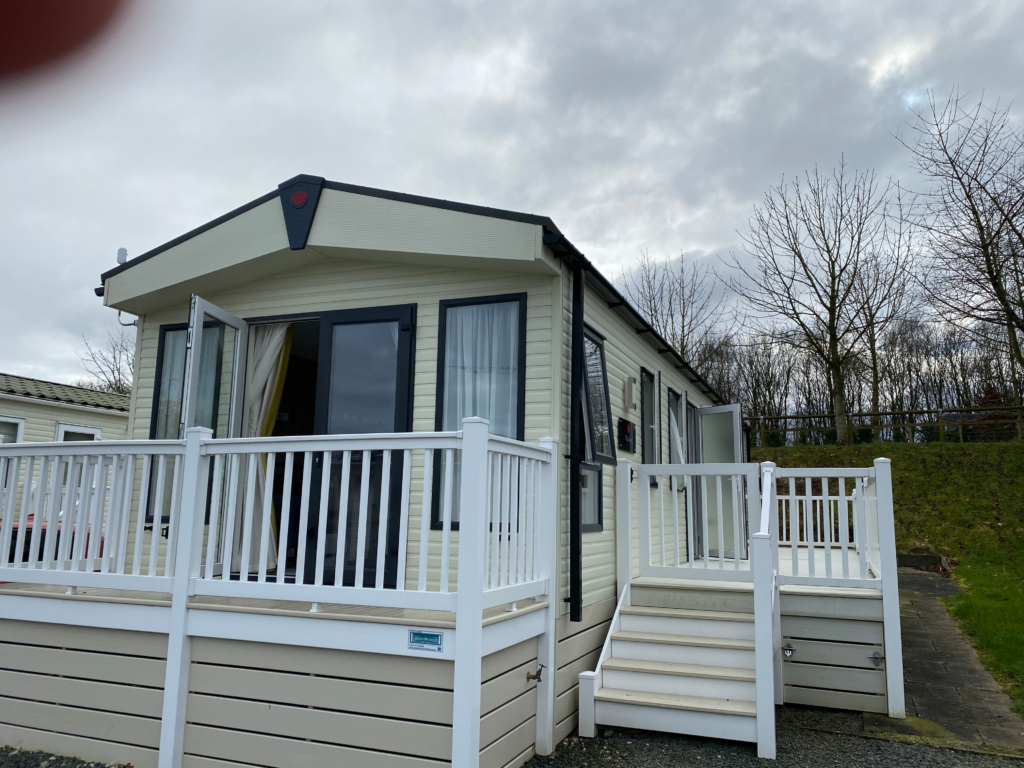
Inside your caravan, be sure to throw open all the doors and windows to let the air circulate through your caravan and once you’ve turned the electricity back on you could use a dehumidifier if it feels damp in the air and there seems to be lots of excess moisture.
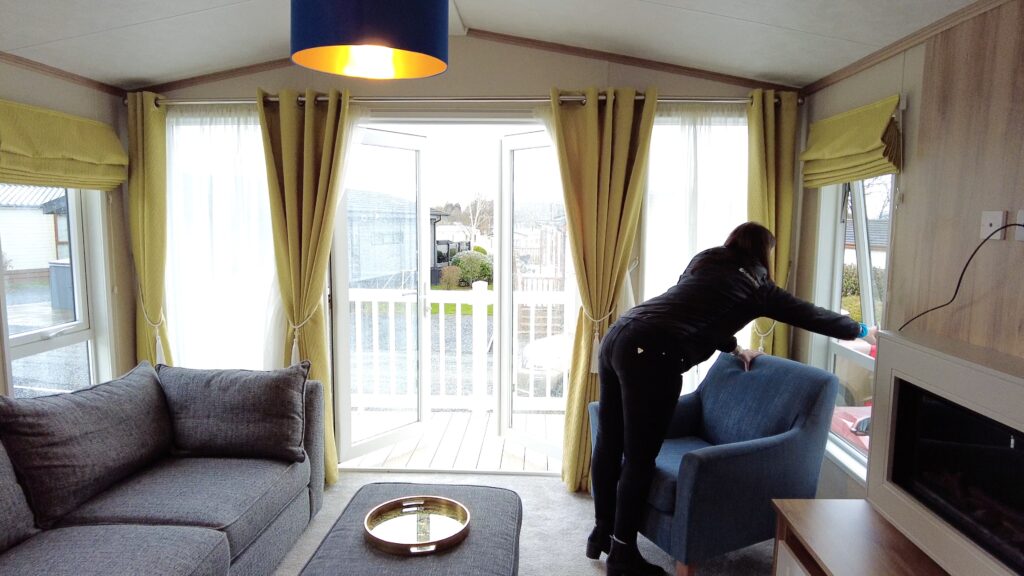
Check all corners of the rooms to make sure you’ve not had any leaks.
5. Check for damp
Your nose is a great indicator to let you know if there’s any damp and mould in your caravan when carrying out your Spring checks.
But it’s also a good idea to do a visual check around the corners of the rooms, along ceilings, around vents, external doors, windows and any skylights. Pay particular attention to the kitchen and bathroom areas, looking for any discolouration or water marks around taps, sinks, showers or white goods. Also check the backs of cupboards.
Also, check your furnishings for damp, mildew or mould, including the underside of cushions and mattresses.
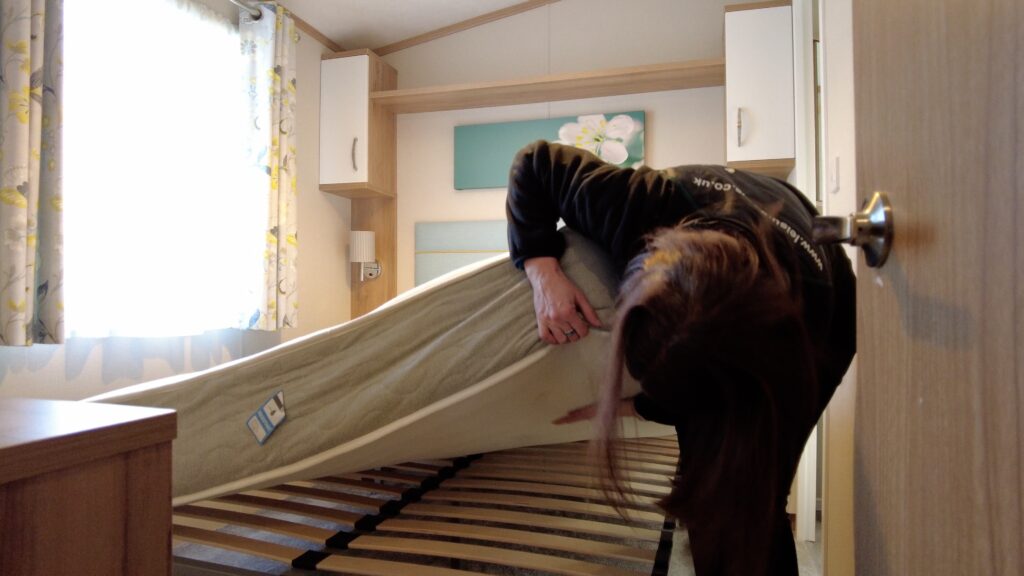
If there’s any springiness in the floors, make sure it’s not caused by damp by looking to see if there are any damp or dark patches. You might also want to use a damp meter if you’re concerned.
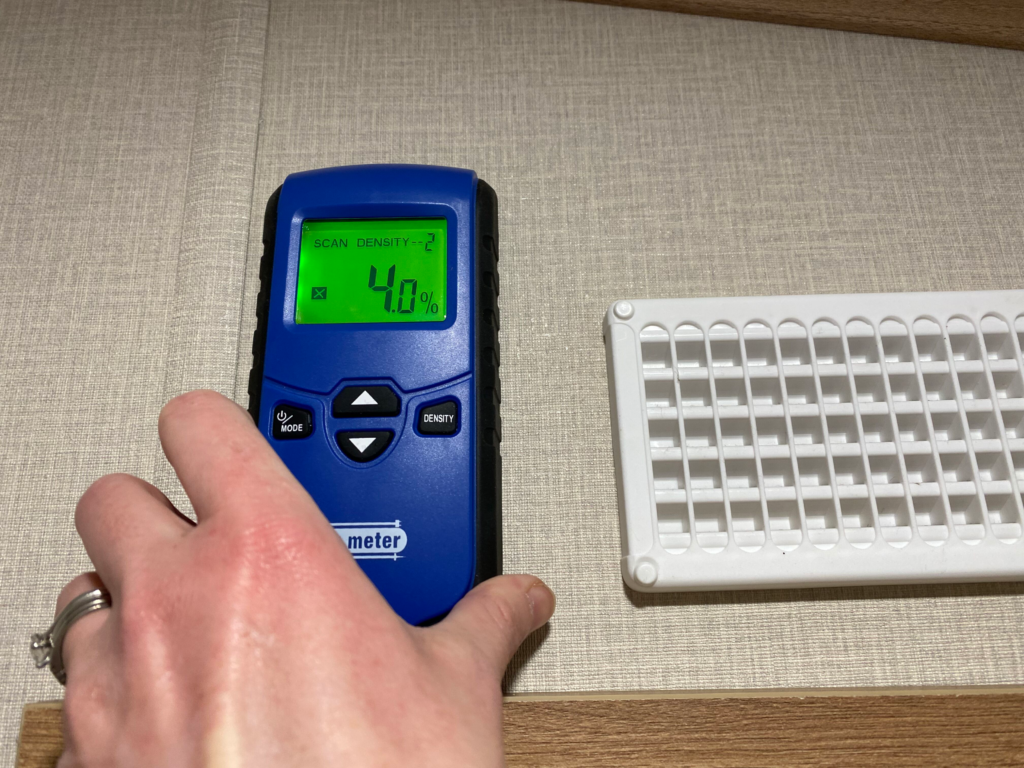
If you’ve used any moisture traps or salt containers during the winter months then empty these.
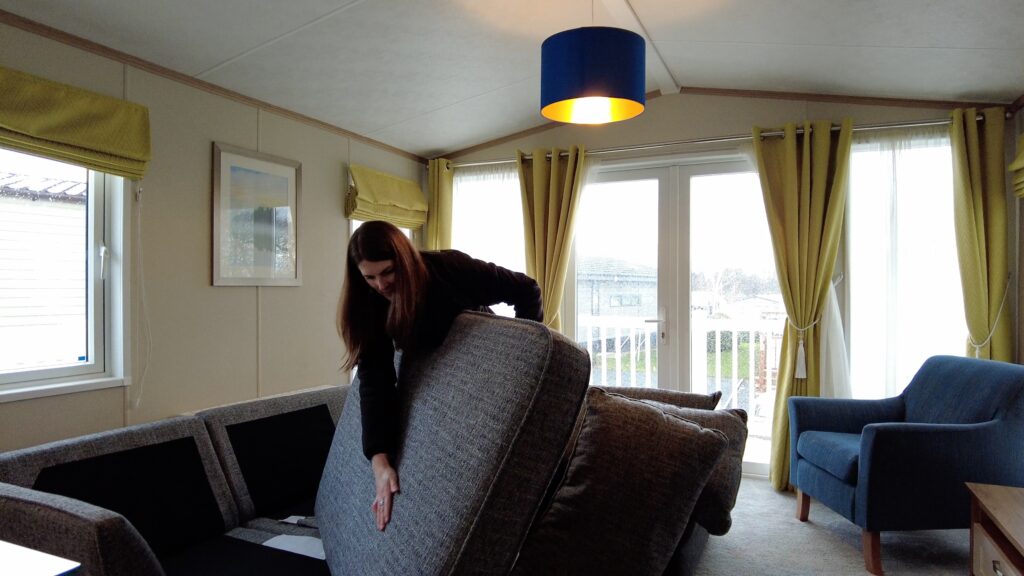
Also have a good look in every room to make sure you’ve not had any unwelcome visitors, such as mice or rats, by looking for droppings or damage to upholstery or even the furniture or flooring.
6. Turn on the water
Turn on the water at the stopcock, then slowly open up one tap at a time inside the caravan and let them run for a few minutes to get rid of any trapped air.
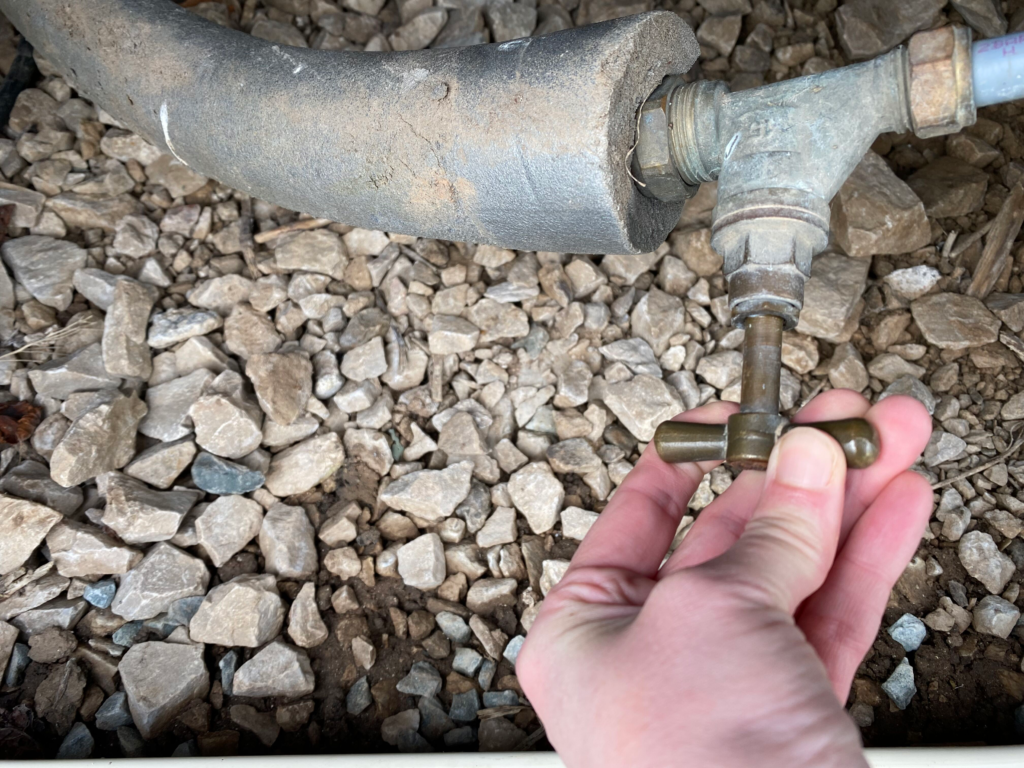
Keep an eye on the underside of your caravan for any leaks and once all taps are open and water is running through the caravan turn up the water pressure, and continue to look for any leaks.
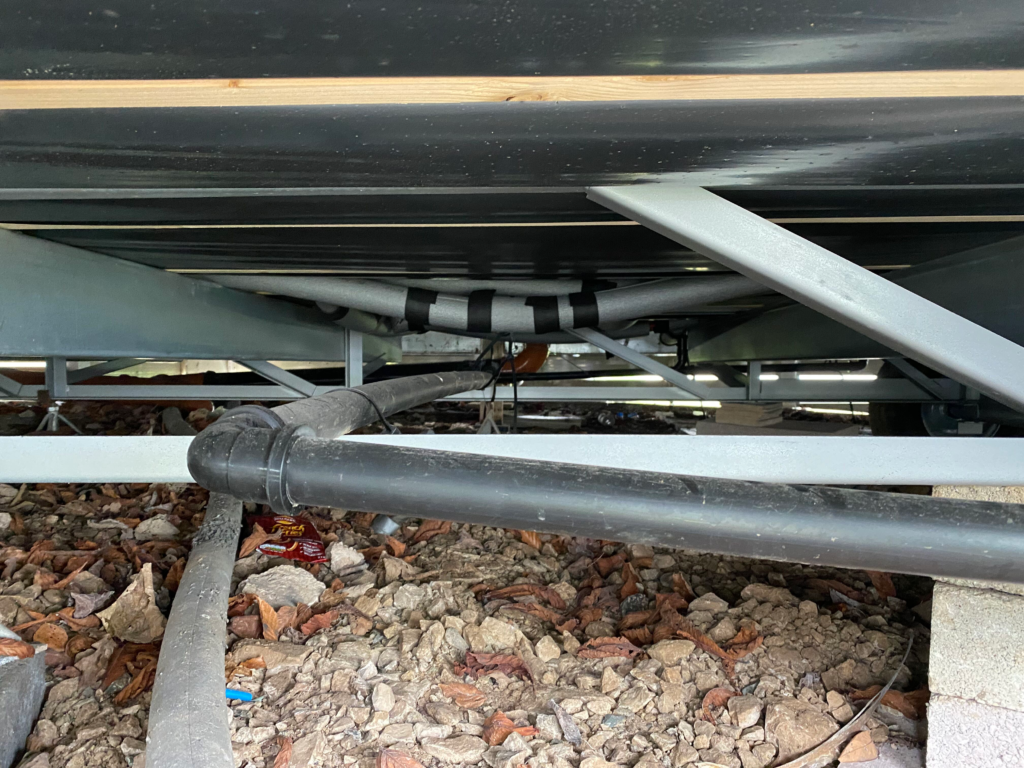
Pay particular attention to pipework in bathrooms behind showers and toilets and areas behind the dishwasher and washing machine if you have one.
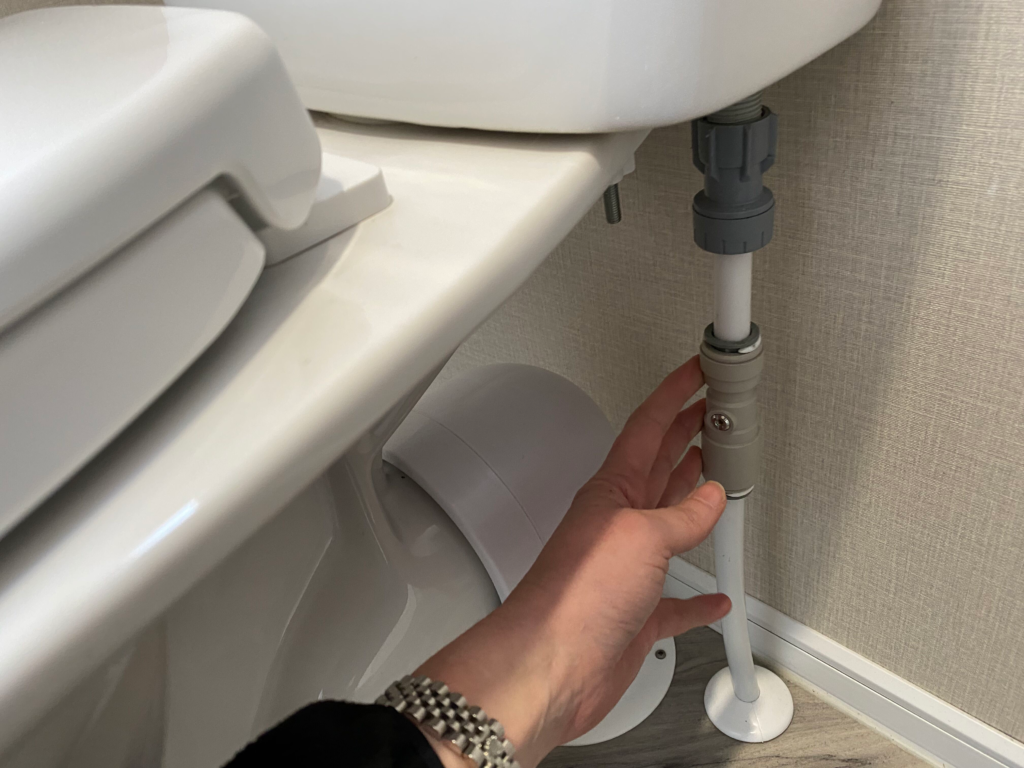
7. Turn on the heating
Close the windows and warm the caravan through by turning on the heating system, be that the gas central heating, electric heaters, fire, or oil filled radiators.
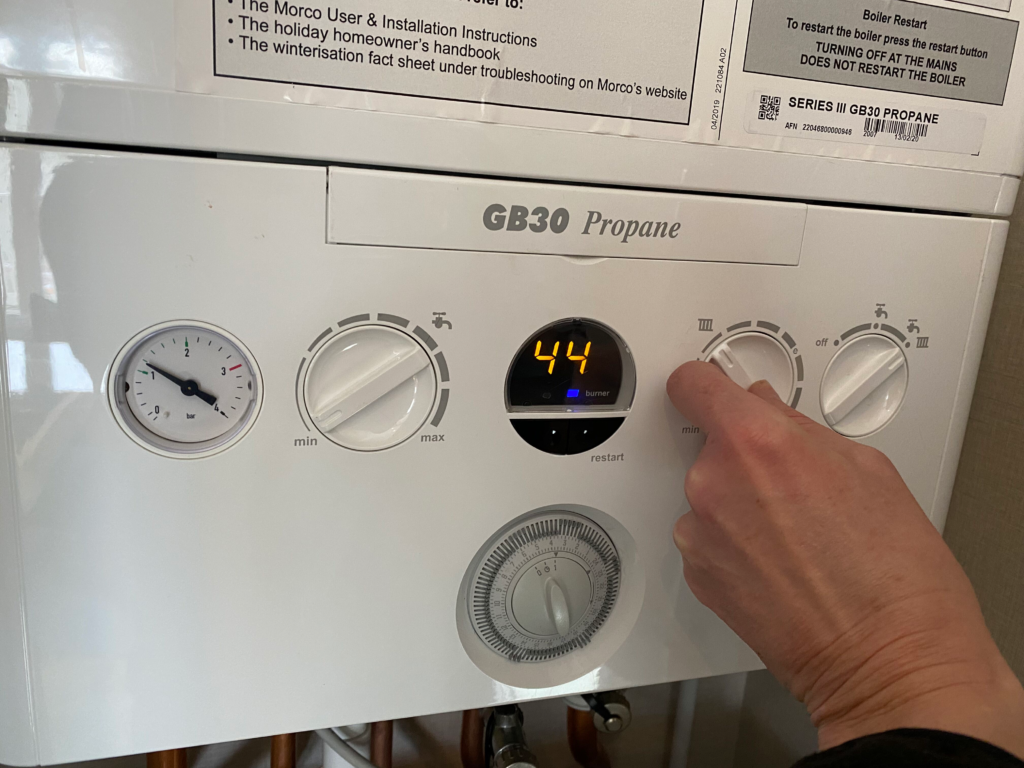
8. Check safety devices
Replace batteries in smoke alarms, carbon monoxide detectors and then security alarms, if needed.
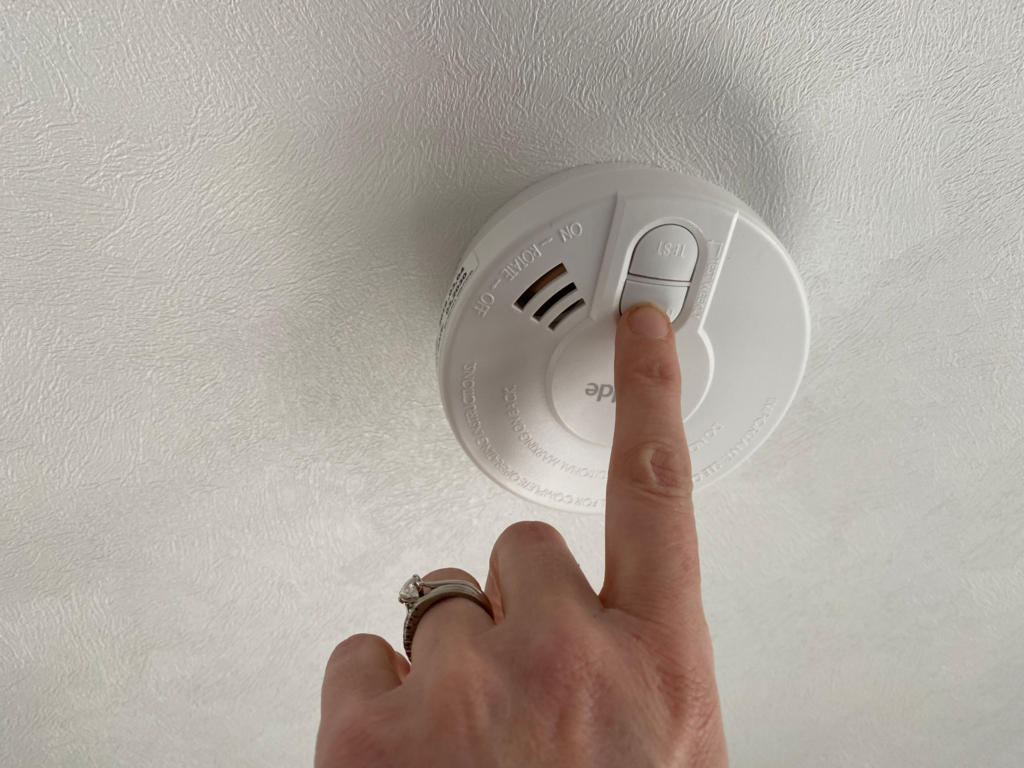
Also, check the dates on your fire extinguisher and fire blanket, and that they’re still in a good condition, arranging a replacement if they’ve expired.
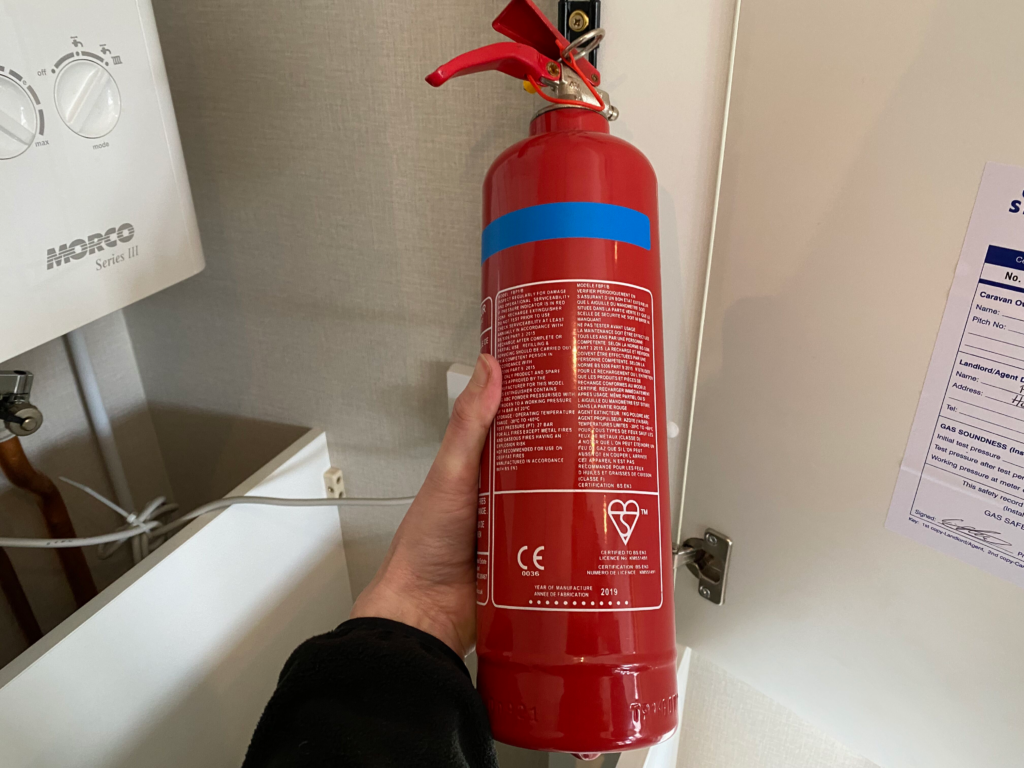
Check dates on any first aid kits too.
If you’ve not already done so, it’s a good time to book your boiler in for its annual service to make sure it continues to give you hot water and heating throughout the season. But do still visually check the pipework around it to make sure there aren’t any leaks or signs of damage, avoiding touching any hot pipes.
9. Give it a good spring clean
Not only will you feel ready to enjoy lots of holidays in your static caravan or lodge if it’s clean and fresh, but removing dirt and other nasties will also help keep the bodywork, soft furnishings and other fixtures and fittings in a good condition.
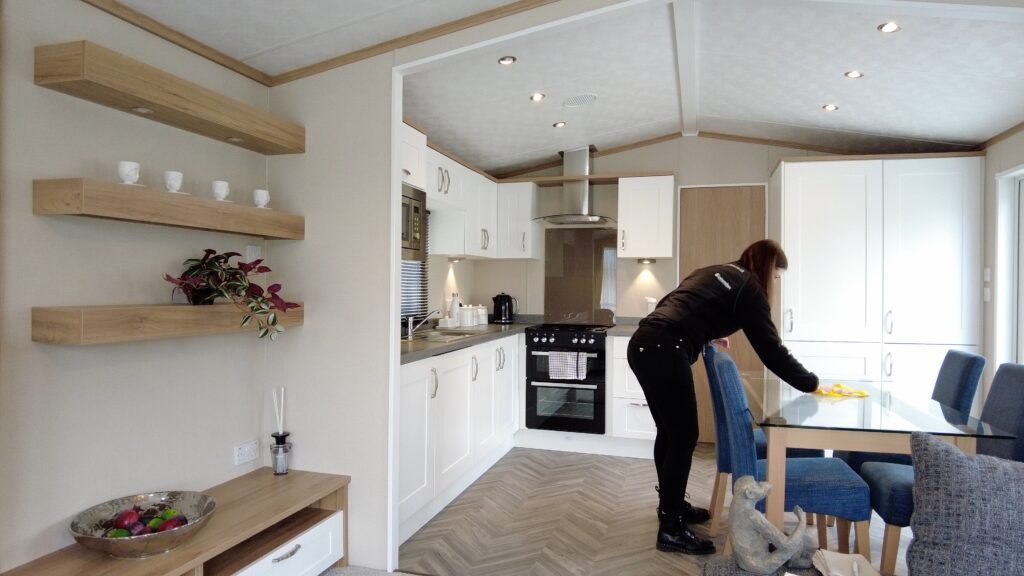
Check out our cleaning guide for more tips.
10. Pop the kettle on!
Finally, you’ll want to pop the kettle on for a nice cuppa, or pour a glass of your favourite tipple, sit back and relax!
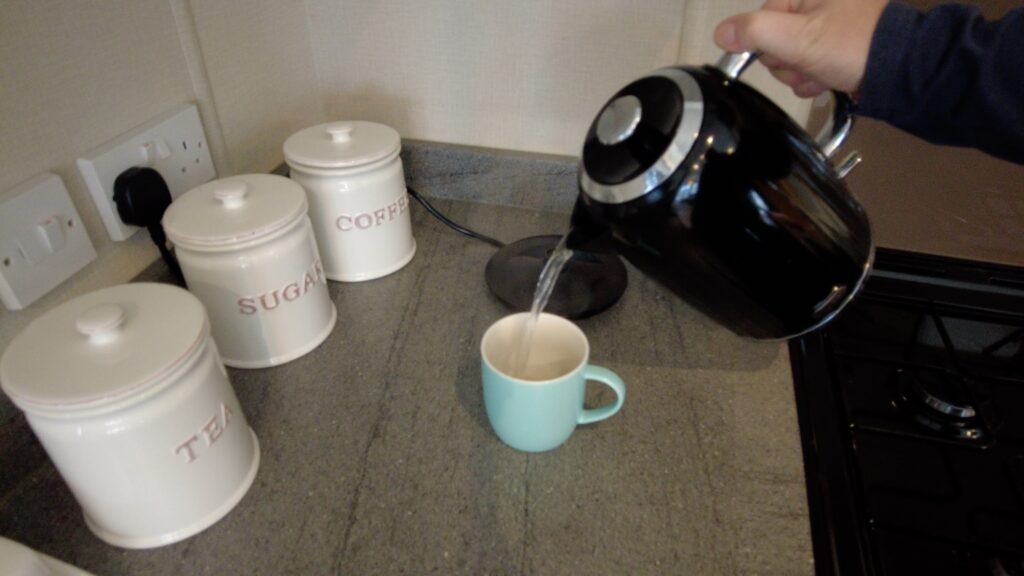
One final check is to make sure your static caravan insurance is up-to-date so you can relax in the knowledge that you’re covered for things like accidental damage, fire, theft, storm and flooding.
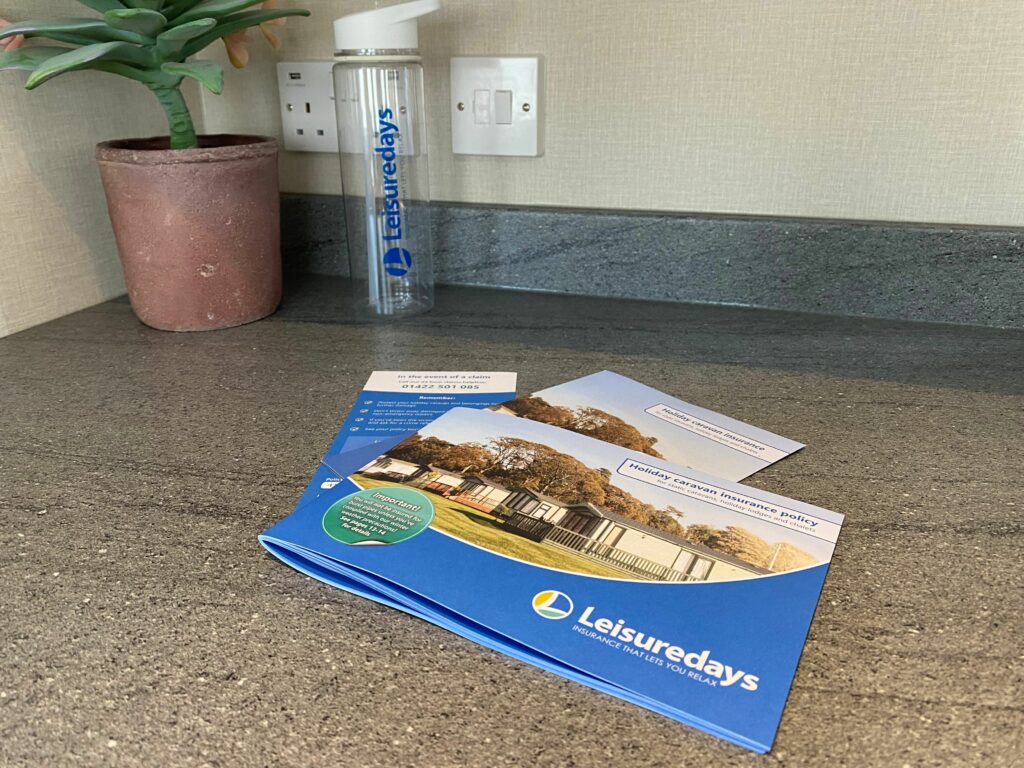
A big thank you to Ribby Hall Holiday Village where we filmed our static caravan Spring checks video.
Over to you
Are there any essential Spring static caravan or holiday lodge checks we’ve missed that you carry out when you make your first visit of the new season? Feel free to add any to the comments box below.





While checking the outside of your holiday home,remember to check the roof guttering and remove dead leaves etc.
Thanks John – great advice.
Would appreciate any bright ideas on avoiding fly infestation as temperatures rise, especially where neighbouring units are affected.
Every van on our park gets many many flied, even the new demo ones.
Me too, Ken! There must have been 100 or more when I visited my home in mid March, mostly dead but I hate dealing with them. Advice welcome.
I put some fine mesh behind the wall and ceiling vents. Seems to work ok.
I use Incognito room refreshers in rooms with a fly problem as they repel insects. Also I keep a spray bottle handy with water and a few drops of peppermint oil (enough so you can smell it) and spray that around. Also it sounds obvious but try and find where they are coming in from. It took us a good year to discover a tiny hole in the sliding door that was admitting the majority so that cut the numbers down once filled.
We always take a bottle of water from home so we can have a cup of tea as soon as we get there and fill the dogs bowl so she can have a drink as well.
Great idea Pam